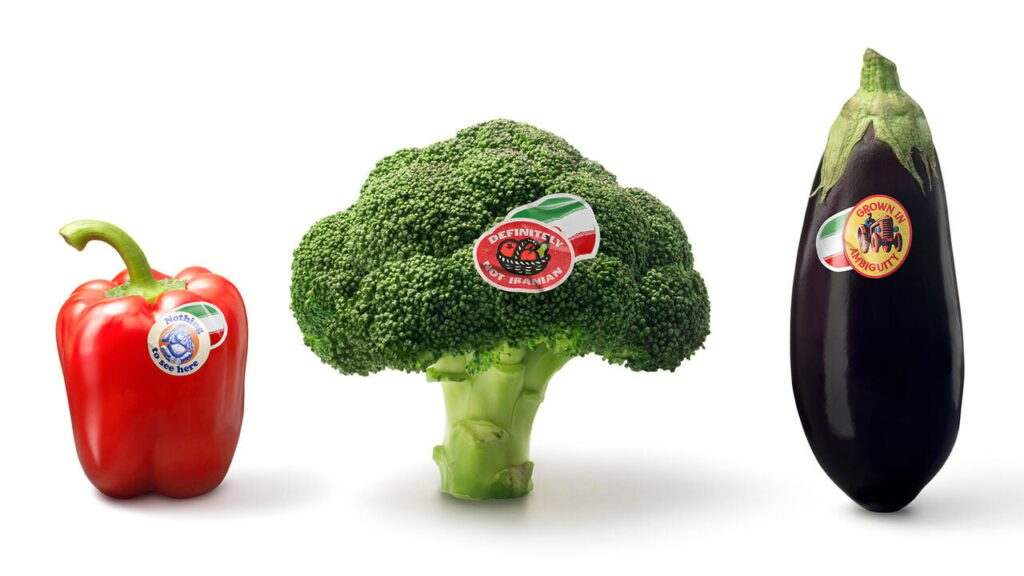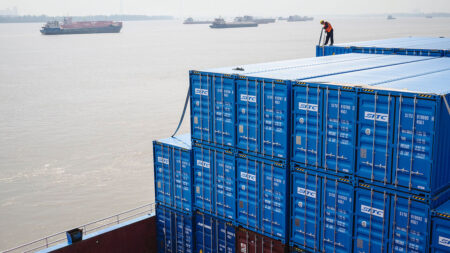In the bustling locale of Al Aweer, located approximately 20 kilometers east of Dubai’s city center, a vivid scene unfolds daily. Trucks laden with fresh fruits and vegetables engage in a substantial, skilled choreography through narrow lanes, reminiscent of a large-scale ballet. The mechanical symphony of honking horns and revving engines provides the soundtrack to this vibrant marketplace. Nestled within a one-square-kilometer expanse, this market is the Middle East’s largest hub for food wholesale, echoing the region’s burgeoning consumer demands. Nonetheless, within this fertility of commerce, an underbelly of grand-scale smuggling operates covertly—undermining local agricultural producers and established supply chains while simultaneously sustaining Iran’s economy amid crippling sanctions.
Iran, positioned just opposite the Gulf, faces significant challenges. In the aftermath of its war with Israel, the nation has been subjected to heightened isolation. While its oil exports continue, the process of receiving payments has become increasingly convoluted, exacerbated by intensified U.S. sanctions. Countries like Britain, France, and Germany threaten to reinstate embargoes if Iran fails to engage seriously in nuclear negotiations. In an effort to navigate these constraints, Iran has turned to the export of food commodities, rapidly becoming a dominant supplier in the UAE market. Remarkably, it now accounts for nine out of ten cauliflowers, tomatoes, and watermelons that the UAE imports, establishing a near-monopoly in this segment.
This scenario raises an intriguing question: How has Iran managed to thrive in a realm marred by sanctions? Despite food exports from Iran facing no direct sanctions, shippers, banks, and retailers view dealings with the country as too precarious, leading to an apparent paradox where Iranian food exports flourish in obscurity. Interestingly, shelves in Dubai supermarkets showcase limited Iranian produce, prompting inquiries into the true destination of these surging exports.
To unravel this mystery, The Economist engaged with farmers, wholesalers, retailers, and illicit traders dispensing Iranian goods. The investigation revealed a complex supply chain behind the sale of Iranian groceries, feeding unsuspecting customers across the Gulf, including nations officially void of such imports like Saudi Arabia. This intricate commerce reveals high-level conflicts of interest, whereby middlemen profit immensely while local farmers struggle. Estimates indicate that Iran might have garnered between $4 billion to $5 billion from these exports in 2024, marking the commencement of a burgeoning market.
Iran’s agricultural sector, blessed with fertile soil and a conducive climate, not only supports around 23 million Iranian livelihoods but also satisfies 80% of the nation’s food supply. Agricultural exports have become increasingly pivotal, representing a fifth of the country’s non-oil exports. To bolster this sector, the government aggressively subsidizes water, fertilizers, and energy, considerably lowering costs for farmers. Invested in technologies such as hydroponics and expanding greenhouse cultivation, Iranian agriculture is evolving, with plans for strawberry farms capable of outperforming competitors within the next few years.
Regrettably, neither Iran nor the UAE publicizes precise trade numbers, yet clandestine data sources confirm Iran’s dominance in the export market, particularly in the UAE, where it has successfully cornered 15 different commodities from eggplants to melons. The patterns echo similarly in Oman and Qatar, with reports of soaring volumes and improved quality for Iranian produce. Surprisingly, much of this agricultural output originates not from state-run entities, but rather from approximately 36,000 small growers throughout Iran.
After harvesting, these products are transported via small ships from Bandar Lengeh in southern Iran to Sharjah in the UAE, with swift turnaround times and reduced shipping costs compared to competitors like Egypt and Turkey. Although customs in Sharjah register much of the incoming Iranian produce, the payment dynamics shift dramatically due to Emirati banks’ reluctance to process transactions linked to Iran. Thus, informal networks employing a system known as hundi facilitate payments, allowing goods to flow without formally exchanging currencies.
At Al Aweer market, however, the intricate reality of Iranian wholesaling becomes clearer. Wholesalers, armed with deep knowledge of the market’s infrastructure, orchestrate orders, logistics, and intelligence, often opting to obscure the origins of the produce to protect against scrutiny. They blend Iranian goods with offerings from reputable sources, a strategy that allows them to maintain higher profit margins while keeping Iranian origins secret.
The UAE serves not only as a primary recipient of Iranian produce but also acts as an intermediary for reexports. Originally restricted from importing Iranian products, countries like Saudi Arabia face challenges blocking these goods. Many traders utilize subterfuge by attaching false labels denoting origins like Azerbaijan or Turkey to shipments laden with Iranian vegetables.
While the UAE aims to enhance its local food production through advanced farming initiatives, this appears futile as reliance on Iranian imports undermines local agricultural viability. The complexities of this trade signal not only immediate economic ramifications but broader geopolitical implications. The interaction between the UAE and Iran solidifies the necessity for a strategic approach to food









